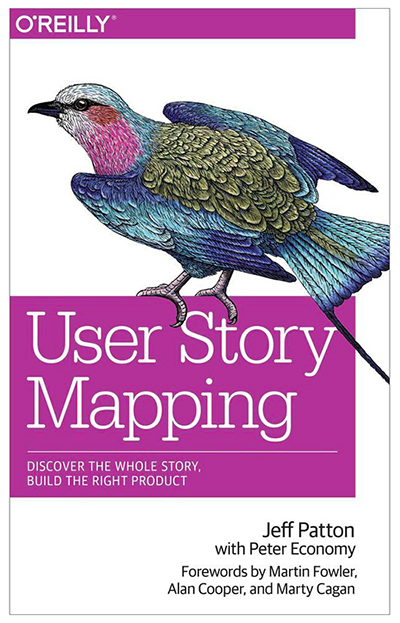You’re accessing archived content
This is archived content from the UIT website. Information may be outdated, and links may no longer function. Please contact stratcomm@it.utah.edu if you have any questions about archived content.
Jeff Patton: Making UIT product managers more "customer-centric"

Jeff Patton, software
developer/consultant
Jeff Patton wants UIT product managers and other staff to be more like doctors and less like waiters.
“When I behave like a waiter, a customer tells me what they want and I need to work it out and get it to them. A doctor’s job is to solve your problems, not do what you want,” Patton said.
Patton, who heads the Park City-based consulting firm Jeff Patton & Associates, has more than 20 years of experience in commercial software development. In July, he led a multi-day training workshop for UIT staff: Customer-centric Product Management.
Patton said organizations like UIT tend to approach software development from a waiter-ish "customer is always right" perspective. He said the problem with that people-pleasing approach is that what someone wants isn't always what they need.
"A waiter will ask if I'd like an appetizer or a dessert. My doctor will remind me that I’m 30 pounds overweight," Patton said. "I try to explain to her that I travel an awful lot, that it’s hard to get good food in a restaurant, but she looks me square in the eyes and says, ‘You know they have salads in all those restaurants you're going to, right?'"
A customer-centric approach means first defining who's the customer and who's the end user – because they're often not the same people. For example, an enterprise-level professional may be request software on behalf of the end user. Being customer-centric, therefore, means determining the true needs of the end user before blindly embarking on a solution.
Patton addressed four basic steps to product management:
- Listen, learn and steer: Understand the problem you intend to solve
- Ideate: Consider a variety of solutions (hypotheses)
- Validate: Combine, test and refine your best ideas
- Deliver: Execute your solutions, continuing to validate as you go
 One tool in a product manager's toolbox is a story map. Patton authored the book, User Story Mapping, and describes a story map as the plot of a product story. This set of techniques
focuses on user behavior rather than product features so that the users’ perspective
informs product design and delivery.
One tool in a product manager's toolbox is a story map. Patton authored the book, User Story Mapping, and describes a story map as the plot of a product story. This set of techniques
focuses on user behavior rather than product features so that the users’ perspective
informs product design and delivery.
Marv Hawkins, University Support Services (USS) Associate Director for Product Management, said that one of the useful tools that Patton presented was the Opportunity Canvas. It helps the product manager validate a problem by answering a series of questions, such as who the target user is and how success will be measured. He said it's a powerful tool for creating a business case that can be presented to an IT Governance body.
"In this approach, you start with the problem," Hawkins said. "This seems to be most effective for bigger projects, as a way of capturing what the request is, why it's important, and what's being solved. It allows us to concentrate on the impacts and outcomes before working on the actual solutions and deliverables."

"An opportunity canvas focuses on developing products that have an impact to the University
rather than strictly looking at output," said Gary Carter, Associate Director of Enterprise
Resource Planning (ERP) in USS.
Patton travels the world teaching best practices in Agile project management – a methodology that focuses on cross-functional teams, frequent customer meetings, regular testing, and delivering functional parts of an application as they're ready. He employs Scrum, Extreme Programming, and Lean processes in his work, but hesitates to advocate for any single approach.
"I think of principles as rules of thumb. They're just guidelines," Patton said. "What matters to me is that you’re doing things that are sensible and work. I get a little crazy about people who become dogmatic about any one process."
Characteristic of each approach is deliberately measuring as you go.
"Each organizing discipline teaches you to deliberately stop, reflect and improve; [however,] you have to use expert advice within the context of your organization, architecture, resources and workflow," Patton said. "For me, Agile development is a learning process, not a delivery process."
Two immediately actionable items from the workshop are the concept of team integration – such as Quality Assurance and Engineering – and the discipline of daily stand-up meetings. For 15 or so minutes each morning, software development teams in USS meet around a task board. These stand-ups may include the product manager or Scrum master, a cross section of developers, staff from Quality Assurance, as well as someone from the User Experience (UX) group and, in certain cases, a business partner.
"The focus is on the team overall," Carter said. "It's not just the development team or the QA team, the user experience team is part of it, too."
Overall, Hawkins said the training has helped him become a better product manager.
"Many of the tools presented were quite helpful," he said. "It wasn't really geared to a tactical or operational level in terms of software development, it was more of a change in strategic thinking. Having said that, the methodology can be applied to all work we do."
To learn more about Patton, who will return to lead other product management workshops at the University later in the year, visit his website, follow him on Twitter @jeffpatton, or subscribe to his RSS feed.
Node 4
Our monthly newsletter includes news from UIT and other campus/ University of Utah Health IT organizations, features about UIT employees, IT governance news, and various announcements and updates.
